☰ Navigate this post:
Published January 25, 2019
Learning Objectives
This blog post sets out with others to meet the following learning objective:
| Learning Objective 2 |
|---|
Blog post(s) and associated artefacts describing and demonstrating:
|
Project Plan
From project start up, scheduled classroom activities took the space we had expected allocated to group work (see Figure 1).
Poor team availability made determining which platform to study hasty. We fell behind the prescribed class schedule. Classroom exercises shared no context with our project progress. On raising this to our tutor, we were kindly given space to regroup.
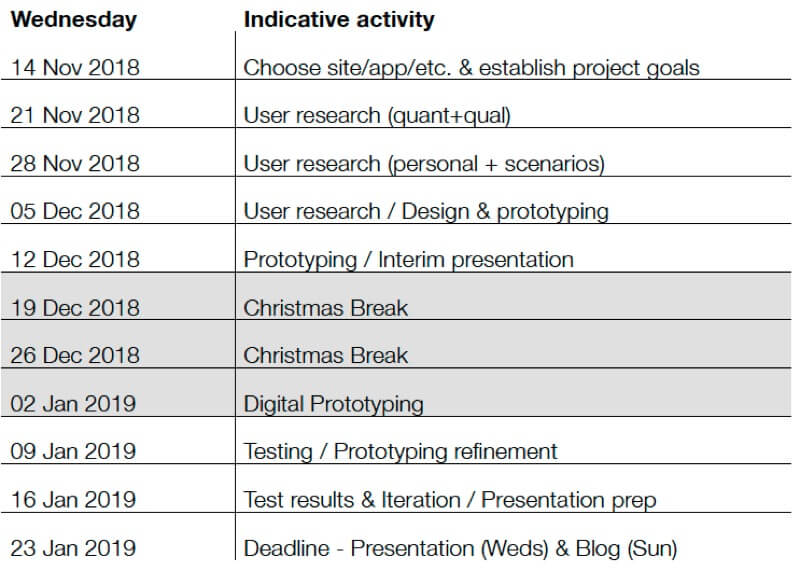
Trello
I had set up and shared a Trello board featuring task creation, scheduling, delegation, and reminders to help us to organise tasks (see Figure 2). I was alone in its upkeep. My team colleagues had no time to learn it and were more familiar with spreadsheet burn-down charts.
The classroom schedule became our burn-down chart prescribing our milestones. And in class, we really had no choice but to follow it.
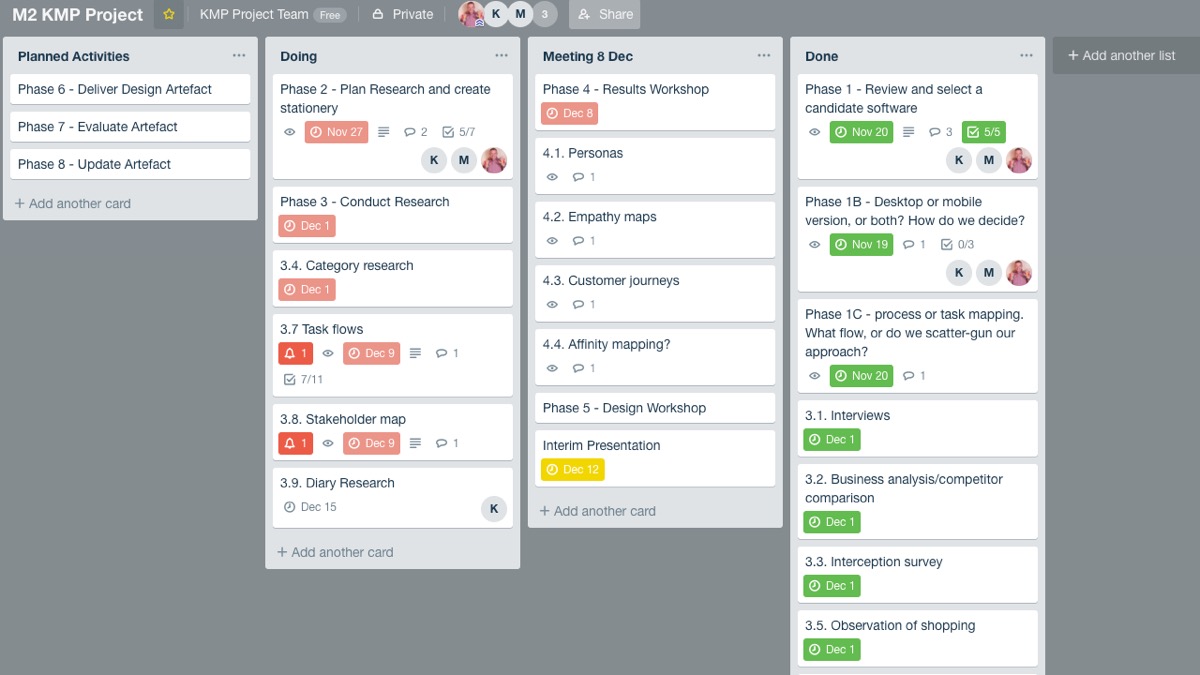


Google Drive
I had also created our shared Google Drive directory for its collaborative strengths (see Figure 3). Mary adopted it with vigour.



Roles
We were to adopt unfamiliar roles. Project and situational expediencies challenged the instruction.
Research roles
I drafted a research plan with Mary’s input and took on our desktop research with references input by the team and tutor. While still working remotely, Mary planned and initiated our interview strategies.
Our tutor prompted us to field research shopping behaviours and report back the following week. Now as a field researcher, I researched, planned, and executed an intervention survey and observations. (Figure 4.)
Mary scripted and conducted nine interviews and I conducted one. Mary also took on the bulk of the work creating believable personas after segmenting our data.
After workshopping, Karen conducted a diary study to confirm assumptions raised by earlier research.
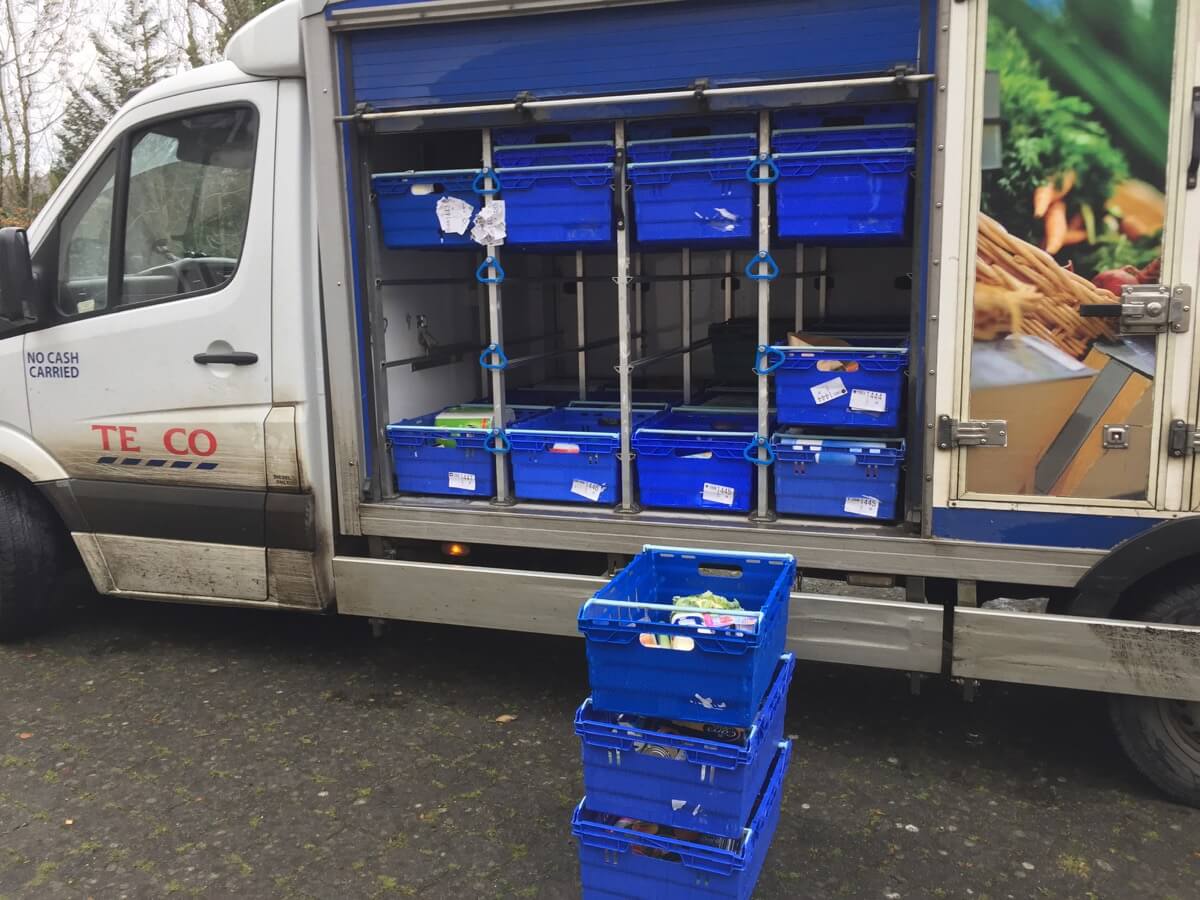


Workshop
Karen, Mary, and I scheduled a Saturday workshop. We worked hard to catch up on the project pace.
We ideated solutions and card-sort affinity and empathy maps, user journeys, storyboarding, and updated personas and scenarios using sticky notes and sketches (see Figure 5.) Creating lists appeared a problem in the shopping experience.
Karen led design sketching of arbitrary lists and configuring items to the basket. Mary and I helped to test and develop the concept. Agreement was not unanimous and we had a loose solution to work to.
On breaking up, we summarised and delegated tasks. Mary noted the tasks were poorly distributed and volunteered to curate the presentation. I took on the storyboard and some administraton. Karen took her diary study.
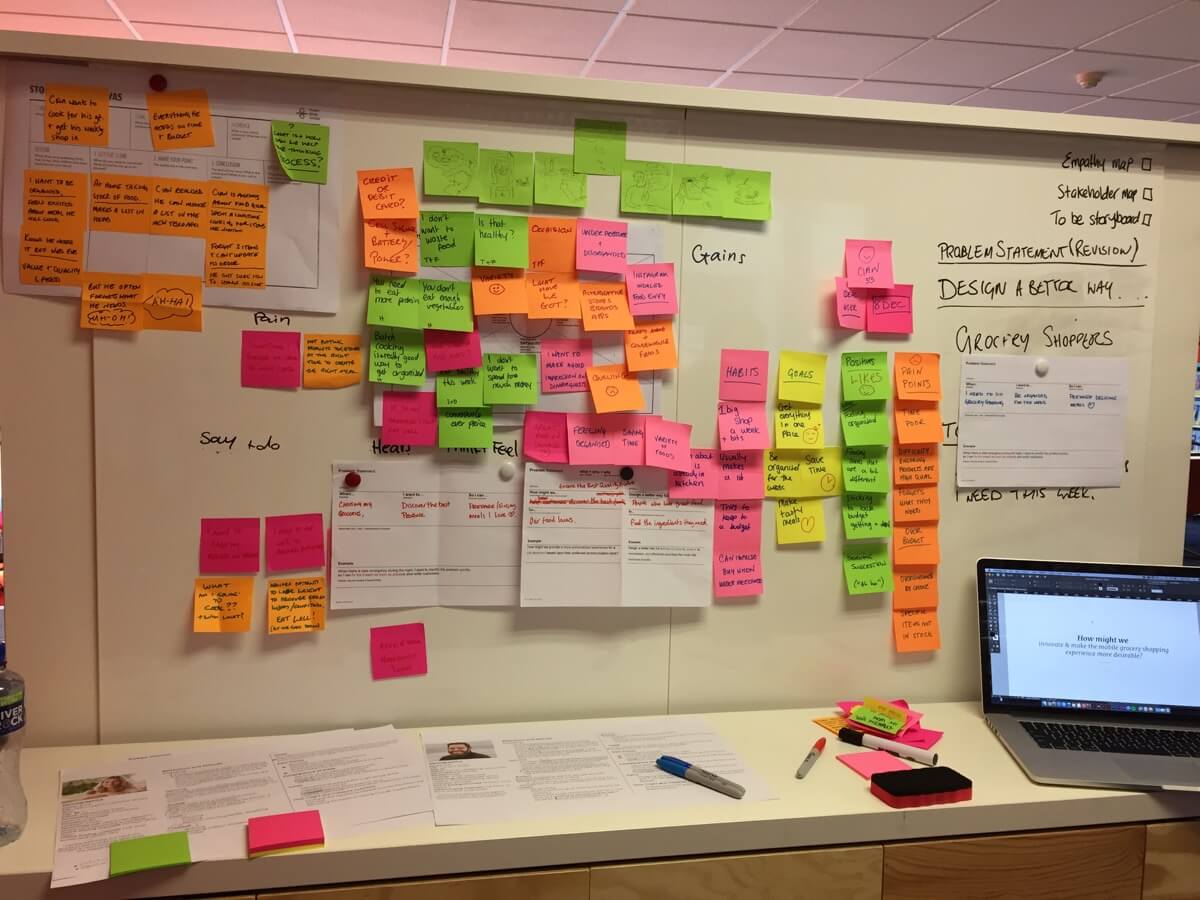


Presentation
The presentation presented an overview of our combined research, findings, and artefacts with Karen adding ambitious opportunities to employ emerging technologies. (An example slide at Figure 6.)



Prototyping
While still not unanimous in our approach, and looking to perform new roles, Mary adopted the prototyping role using visual design elements supplied by Karen. (See Figure 7.)
Mary and I conducted two user tests each. Quantitatively it was a success – our participants each completed their tasks. Qualitatively, our core list-to-basket strategy failed to meet our participants’ goals.
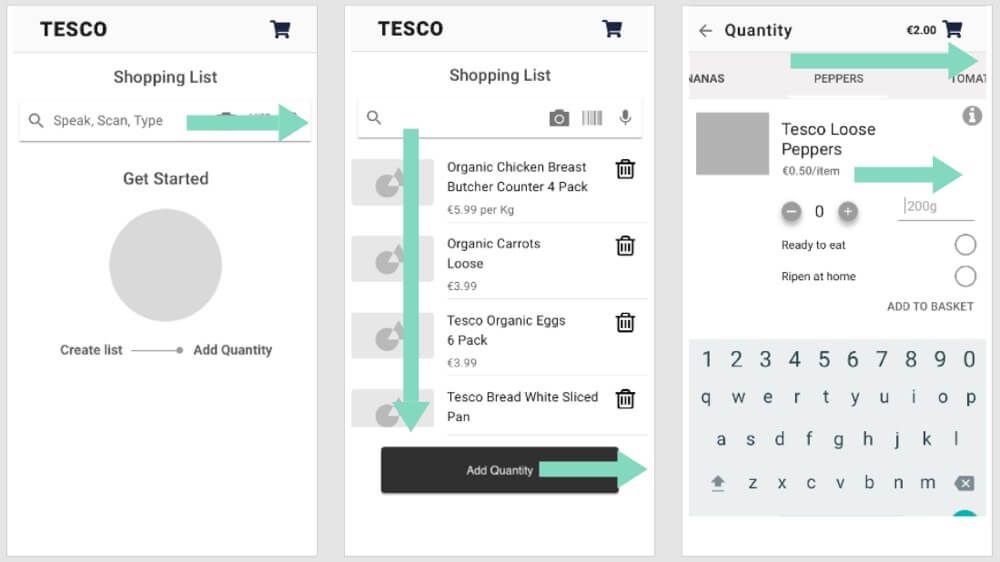


We were a little bruised. Time was short and we needed a new flow design.
I criticised the prescriptive clicking nature of the InVision prototype and ambitiously volunteered to emulate the shopping experience using Axure data to meet the team’s iterative feedback. I also prototyped Karen’s arbitrary list concept as backup.
Final Tutorial
At the final tutorial, we remained uncoordinated.
I put forward that we must unanimously agree a solution. Based on the user testing feedback, we salvaged what had worked well and realigned that which had not into a new flow and modified prototyping continued to completion. (See Figure 8.)
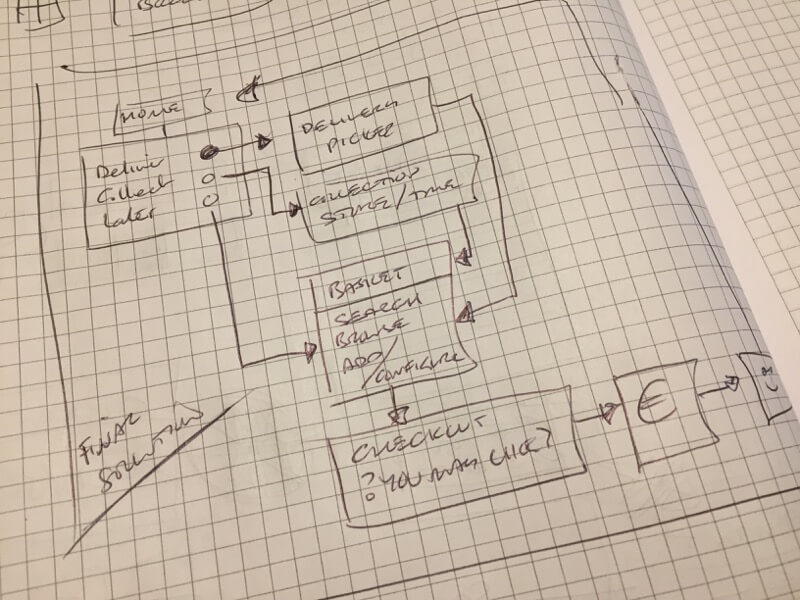


Revised prototype
We hit the revised prototype milestone on time after three days of working on the new solution. (See Figure 8.)
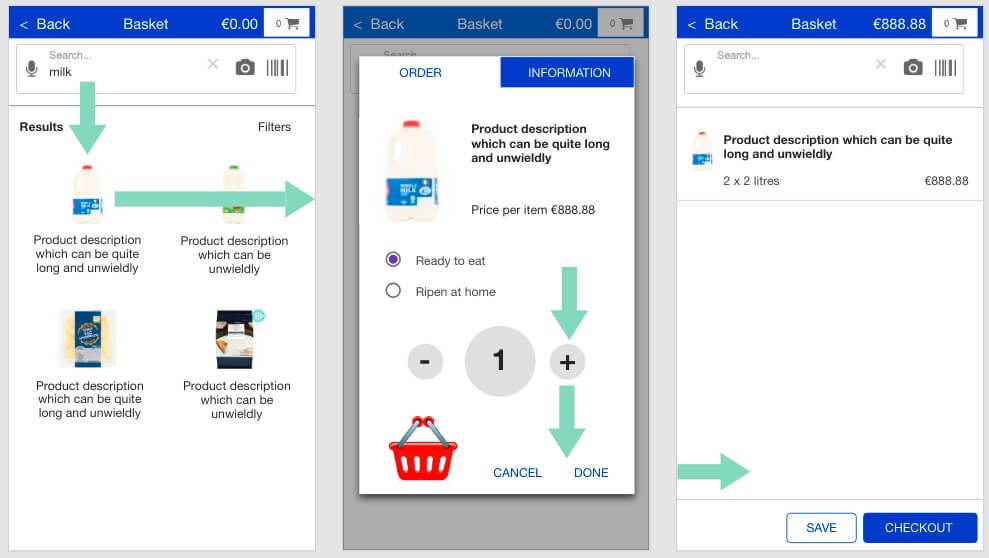


Final Presentation
Mary curated the final presentation designed it to simply concentrate on the prototype. We were delighted to hear a, “wow” from the class after enabling their choice of what to shop for (bread). Karen supplied a mood board to illustrate future development. (See Figure 9.)
Other class teams were advanced in this area. I am satisfied we solved our tasks and flows by priority. Content first – visual design after. And one day it would only look delightful!
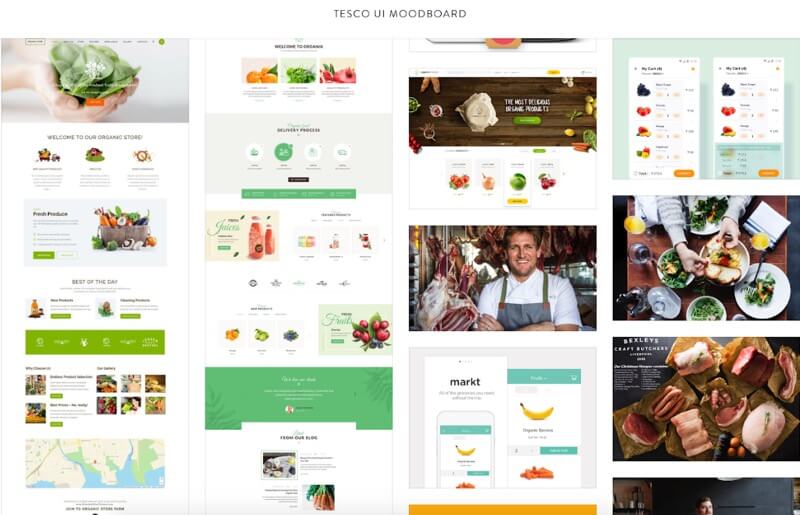


Summary
A difficult team experience threatened at times to overturn our opportunities.
We are pleased and no doubt each relieved that our end product’s reception has been positive – if work is required.
